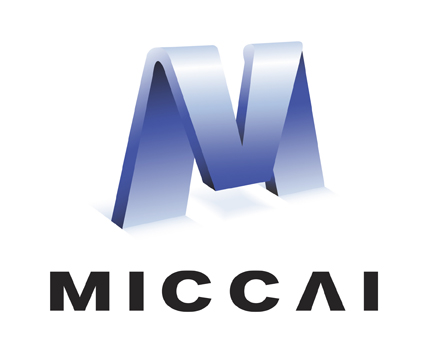Abstract
Malignant ovarian tumors (OTs) are a leading cause of gynecological cancer deaths, and often remain asymptomatic until advanced stages, making early and accurate diagnosis crucial for effective treatment and good patient outcome. Current diagnostic methods often fall short due to the heterogeneous nature of OTs and the complexities in distinguishing benign from malignant forms. To overcome these limitations, this study proposes a novel framework leveraging transformer-based multiple-instance learning (MIL) and hierarchical self-supervised pre-training. To validate the model, a comprehensive multi-center dataset has been compiled, encompassing diverse patient demographics and imaging protocols. Benchmarking against conventional radiomics methods and other deep learning approaches, the hierarchical MIL model demonstrates superior performance with a median AUROC of 0.84 and high recall of 0.91. These results highlight significant improvements in sensitivity, essential for minimizing false negatives in clinical settings. The performed study emphasizes the importance of multi-center validation and external dataset testing to ensure generalization of the proposed model and obtain a higher robustness. The encountered complexity of multi-center data is found significant, since various clinical factors play an influential role. This makes baseline comparisons virtually impossible and the need for more multi-center research increasingly compelling and encouraging.
Access this chapter
Tax calculation will be finalised at checkout
Purchases are for personal use only
Similar content being viewed by others
References
WHO Ovary Tumor classification. http://www.pathologyoutlines.com/topic/ovarytumorwhoclassif.html
Caron, M., Touvron, H., Misra, I., Jégou, H., Mairal, J., Bojanowski, P., Joulin, A.: Emerging Properties in Self-Supervised Vision Transformers (2021). https://doi.org/10.48550/ARXIV.2104.14294, https://arxiv.org/abs/2104.14294, publisher: arXiv Version Number: 2
Chen, R.J., et al.: Scaling Vision Transformers to Gigapixel Images via Hierarchical Self-Supervised Learning, pp. 16144–16155 (2022). https://openaccess.thecvf.com/content/CVPR2022/html/Chen_Scaling_Vision_Transformers_to_Gigapixel_Images_via_Hierarchical_Self-Supervised_Learning_CVPR_2022_paper.html
Cho, K.R., Shih, I.M.: Ovarian cancer. Ann. Rev. Pathol. 4, 287–313 (2009). https://doi.org/10.1146/annurev.pathol.4.110807.092246
Claessens, C.H.B., et al.: Evaluating task-specific augmentations in self-supervised pre-training for 3D medical image analysis. In: Medical Imaging 2024: Image Processing, vol. 12926, pp. 403–410. SPIE, April 2024. https://doi.org/10.1117/12.3000850. https://www.spiedigitallibrary.org/conference-proceedings-of-spie/12926/129261L/Evaluating-task-specific-augmentations-in-self-supervised-pre-training-for/10.1117/12.3000850.full
Geomini, P.M.A.J., Kruitwagen, R.F.P.M., Bremer, G.L., Massuger, L., Mol, B.W.J.: Should we centralise care for the patient suspected of having ovarian malignancy? Gynecol. Oncol. 122(1), 95–99 (2011). https://doi.org/10.1016/j.ygyno.2011.03.005. https://www.sciencedirect.com/science/article/pii/S0090825811001739
Grill, J.B., et al.: Bootstrap your own latent: a new approach to self-supervised Learning (2020). https://doi.org/10.48550/ARXIV.2006.07733. https://arxiv.org/abs/2006.07733, publisher: arXiv Version Number: 3
Ilse, M., Tomczak, J.M., Welling, M.: Attention-based Deep Multiple Instance Learning (2018). https://doi.org/10.48550/ARXIV.1802.04712. https://arxiv.org/abs/1802.04712, publisher: [object Object] Version Number: 4
Koch, A.H., et al.: Analysis of computer-aided diagnostics in the preoperative diagnosis of ovarian cancer: a systematic review. Insights Imaging 14(1), 34 (2023). https://doi.org/10.1186/s13244-022-01345-x. https://doi.org/10.1186/s13244-022-01345-x
Li, J., Zhang, T., Ma, J., Zhang, N., Zhang, Z., Ye, Z.: Machine-learning-based contrast-enhanced computed tomography radiomic analysis for categorization of ovarian tumors. Front. Oncol. 12, 934735 (2022). https://doi.org/10.3389/fonc.2022.934735
Li, S., et al.: A radiomics approach for automated diagnosis of ovarian neoplasm malignancy in computed tomography. Sci. Rep. 11, 8730 (2021). https://doi.org/10.1038/s41598-021-87775-x
Liu, P., Liang, X., Liao, S., Lu, Z.: Pattern classification for ovarian tumors by integration of radiomics and deep learning features. Current Med. Imaging 18(14), 1486–1502 (2022). https://doi.org/10.2174/1573405618666220516122145
Lof, P., et al.: Psychological impact of referral to an oncology hospital on patients with an ovarian mass. Int. J. Gynecologic Cancer 33(1), January 2023. https://doi.org/10.1136/ijgc-2022-003753, https://ijgc.bmj.com/content/33/1/74, publisher: BMJ Specialist Journals Section: Original research
Ma, J., et al.: AbdomenCT-1K: is abdominal organ segmentation a solved problem? IEEE Trans. Pattern Anal. Mach. Intell. 44(10), 6695–6714 (2022). https://doi.org/10.1109/TPAMI.2021.3100536. https://ieeexplore.ieee.org/document/9497733/
Meys, E.M.J., et al.: Subjective assessment versus ultrasound models to diagnose ovarian cancer: a systematic review and meta-analysis. Europ. J. Cancer 58, 17–29 (2016). https://doi.org/10.1016/j.ejca.2016.01.007. https://www.sciencedirect.com/science/article/pii/S0959804916000459
Mulder, E.E., Gelderblom, M.E., Schoot, D., Vergeldt, T.F., Nijssen, D.L., Piek, J.M.: External validation of Risk of Malignancy Index compared to IOTA Simple Rules. Acta Radiologica (Stockholm, Sweden: 1987) 62(5), 673–678 (2021). https://doi.org/10.1177/0284185120933990
Myronenko, A., Xu, Z., Yang, D., Roth, H., Xu, D.: Accounting for Dependencies in Deep Learning Based Multiple Instance Learning for Whole Slide Imaging (2021https://doi.org/10.48550/ARXIV.2111.01556, https://arxiv.org/abs/2111.01556, publisher: [object Object] Version Number: 1
Park, H., Qin, L., Guerra, P., Bay, C.P., Shinagare, A.B.: Decoding incidental ovarian lesions: use of texture analysis and machine learning for characterization and detection of malignancy. Abdominal Radiology 46(6), 2376–2383 (2021). https://doi.org/10.1007/s00261-020-02668-3
Timmerman, D., et al.: ESGO/ISUOG/IOTA/ESGE Consensus Statement on pre-operative diagnosis of ovarian tumors. Int. J. Gynecol. Cancer: Official J. Int. Gynecol. Cancer Soc. 31(7), 961–982 (2021). https://doi.org/10.1136/ijgc-2021-002565
Togashi, K.: Ovarian cancer: the clinical role of US, CT, and MRI. Eur. Radiol. 13(6), L87–L104 (2003) 10.1007/s00330-003-1964-y, https://doi.org/10.1007/s00330-003-1964-y
Woo, Y.L., Kyrgiou, M., Bryant, A., Everett, T., Dickinson, H.O.: Centralisation of services for gynaecological cancers - A Cochrane systematic review. Gynecol. Oncol. 126(2), 286–290 (2012) 10.1016/j.ygyno.2012.04.012, https://www.sciencedirect.com/science/article/pii/S0090825812002673
Acknowledgements
We gratefully acknowledge the Catharina Hospital Eindhoven, the Amphia Hospital Breda, and The Dutch Cancer Institute - Antoni van Leeuwenhoek Hospital Amsterdam for their invaluable data collection support essential to this project.
Author information
Authors and Affiliations
Corresponding author
Editor information
Editors and Affiliations
Ethics declarations
Disclosure of Interests
The authors have no competing interests to declare that are relevant to the content of this article.
Rights and permissions
Copyright information
© 2025 The Author(s), under exclusive license to Springer Nature Switzerland AG
About this paper
Cite this paper
H.B. Claessens, C. et al. (2025). Multi-center Ovarian Tumor Classification Using Hierarchical Transformer-Based Multiple-Instance Learning. In: Ali, S., van der Sommen, F., Papież, B.W., Ghatwary, N., Jin, Y., Kolenbrander, I. (eds) Cancer Prevention, Detection, and Intervention. CaPTion 2024. Lecture Notes in Computer Science, vol 15199. Springer, Cham. https://doi.org/10.1007/978-3-031-73376-5_1
Download citation
DOI: https://doi.org/10.1007/978-3-031-73376-5_1
Published:
Publisher Name: Springer, Cham
Print ISBN: 978-3-031-73375-8
Online ISBN: 978-3-031-73376-5
eBook Packages: Computer ScienceComputer Science (R0)




